Service Level
Agreement
Initial contact with the Help desk is coordinated through the First Level Support (FLS) team.
FLS is staffed by help desk technicians trained for 1st level application and hardware support.
Support to customers requiring onsite assistance as well as second-level support
is handled by the Technical Services team and other teams within HIOD IT.
Service Level Agreement
| Priority Level | Description | Response Time | Communication w/ Customer |
|---|---|---|---|
| Priority 1 | Critical | 2 hours | Every 4 hours |
| Priority 2 | High | 4 hours | Daily (Business Days Only) |
| Priority 3 | Standard | 8 hours | Every 3 Business Days |
| Priority 4 | Scheduled or Low | 3 days | Weekly |
| Priority 5 | Project | 2 days | Bi-monthly |
Priority Definitions
Calls that are made to the Help desk are prioritized based on the nature, severity and time of the call. The following definitions have been developed in order to service HIOD IT’s customers in the most efficient manner possible.
Priority 1: A problem or issue impacting a significant group of customers or any mission-critical issue affecting a single customer. When a Priority 1 situation occurs, it is of vital importance that we have a clear understanding of the severity of the issue and that the proper IT personnel are contacted immediately so that the necessary resources can be applied to resolve the issue. In addition, the customer(s) must be kept informed as to the progress of the situation.
Examples: (but not limited to):
- Critical network server is down.
- Entire department is down
- A portion of the network is down (connectivity lost).
- Administrative application/system down.
- E-mail not routing or down
- Company Internet connection is lost
- Designated key users impacted by issues.
Priority 2: Non-critical but significant issue affecting a single user or an issue that is degrading the performance and reliability of supported IT services; however, the services are still operational. Support issues that could escalate to Critical if not addressed quickly.
Examples: (but not limited to):
- Individual computer problems in the department
- Setting up new user accounts which have been properly submitted.
- Single user unable to use other workstations to remain productive.
- Printing issues for multiple users.
Locked or restricted staff or faculty user accounts.
Priority 3: Routine support requests that impact a single user or non-critical software or hardware issue.
Examples: (but not limited to):
- A single user may be able to use other workstations to remain productive.
- Printing issues for single users.
- User productivity affected but not completely halted.
- Frequently used software corrupted and needing re-installation.
- Software/Hardware installations, upgrade, etc.
Priority 4: A minor service issue or general inquiry.
Examples: (but not limited to):
- Intermittent problems with workstation but the user is still able to remain productive.
- Non-critical tutorial questions.
- User productivity may be slightly affected but never completely halted.
- User requesting assistance with copying or moving of non-critical files.
- Technical consultations for pending purchases.
Priority 5: A long term project or service request with no specific expectations on response time. Priority 5 issues will be resolved based on scope, timeline, and other competing Priority 5 calls.
Levels of Support
Level 0 Support – An automated or self-service solutions that users can access themselves without the aid of the Help Desk. These include automated password resets, Web sites for requesting support, and knowledge base lookup. Level 0 support is performed without the aid of a Help Desk technician.
Level 1 Support – Filters Help Desk calls and provides basic support and troubleshooting, such as password resets, printer configurations, break/fix instructions, ticket routing and escalation to Level 2 and Level 3 support. May also escalate to IT applications support or call for outside vendor maintenance (Level 4), as needed. A Level 1 technician gathers and analyses information about the user’s issue and determines the best way to resolve their problem. Level 1 may also provide support for identified Level 2 and Level 3 issues where configuration solutions have already been documented.
Level 2 Support – Reserved for desktop, laptop, and other user device support but may also share work with Level 3. Level 2 generally handles break/fix, configuration issues, troubleshooting, software installations, hardware repair (including on site repairs or coordinating depot services). Level 2 support handles escalated issues that Level 1 support is not equipped to handle. Level 2 may escalate to Level 3, depending on the issue and the way the Help Desk operates. Depending on the problem Level 2 support is authorized to research and implement fixes for new issues and only escalate to Level 3, if it is out of their skill set or ability to solve.
Level 3 Support – This level are problems that a technician will try and solve before contacting the manufacturer for support. This includes: Troubleshooting, configuration, database administration, and repair for server, network, infrastructure, Data Center, email, file shares, and other infrastructure issues.
Level 4 Support – Level 4 refers to vendors that our organization can escalate issues to. This usually involve hardware and software vendors, such as vendor software support, printer and copier maintenance, heavy equipment maintenance, depot maintenance, etc. Level 4 support is contracted by an –organization for specific services, but they are not part of the organization.
